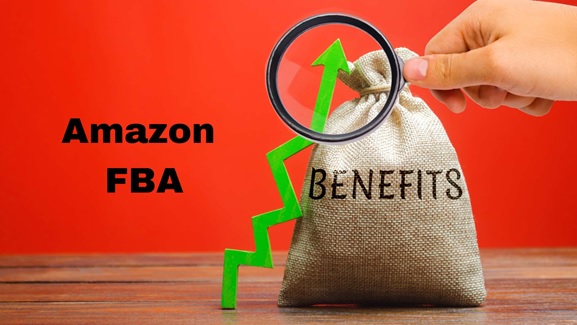Guide to Fulfillment by Amazon
One decision you always need to make when putting a product up for sale on Amazon – how do I fulfill the order. In most Amazon marketplaces, you have two options to choose from – fulfillment by merchant (FBM) and fulfillment by Amazon (FBA).
With FBM, you are responsible for every part of the fulfillment process. You need to store, pack, and ship your products. You also need to handle customer service and product returns/refunds.
Amazon FBA is a paid service. In this case, all you need to do is send the product to the Amazon warehouse. Amazon will store, pack, and ship the product. Amazon’s trained customer service representatives will handle any refund and return requests.
Let us take a deeper look into Amazon FBA and what it has to offer.
Table of Contents
How does Amazon FBA work?
Here is a step-by-step breakdown of the Amazon FBA process.
- Select Amazon FBA as the fulfillment method. Amazon will share the address of an Amazon fulfillment center.
- Ship the products to the Amazon warehouse.
- Amazon will store your product until an order is placed.
- Once an order is in, Amazon will pack your inventory and ship it.
- Amazon’s customer care team manages any refunds or returns.
- You will get your hard-earned money within 14 days.
Since Amazon does a lot of heavy lifting, it saves you a lot of time. This will help you focus on other aspects of your business. It also allows you to scale your Amazon business without having to worry about expanding infrastructure or logistics.
Major advantages of Amazon FBA
Amazon Prime delivery
All FBA products are eligible for Prime delivery. This is critical in an age where customers expect their products to be delivered within 1-2 days. If you can’t fulfill an order in a couple of days, expect to miss out on many potential sales.
Note: FBM sellers can qualify for Prime through SFP (seller fulfilled Prime). However, it is difficult to qualify. You will need a great sales history and overwhelmingly positive feedback from customers.
Better odds at winning the Buy Box
This is most likely due to Prime Delivery. Amazon looks at multiple factors before assigning the Buy Box. The price is not the only metric that matters. The delivery time also plays a role in winning that powerful yellow ‘order now’ button. With Amazon FBA, you get Prime delivery with the package. This gives you an immediate edge over FBM sellers without Prime.
Remember, around 80% of all Amazon sales happen directly through the Buy Box. Controlling it is a sure-shot way of boosting your sales.
Better scalability
For any retail business, logistics is the most time-consuming and difficult vertical to scale. With Amazon FBA, you will no longer have that problem. Not only does Amazon FBA help you save money in the long run, but it also helps you quickly expand your operations.
No matter how large your inventory gets, Amazon’s massive warehouses have more than enough space to store it. They also have the hands required to fulfill a large number of orders.
Expert customer support
With Amazon FBA, you won’t have to deal with any returns or refunds. Amazon’s professionals take care of customer service. This means that you will not have to hire a team to handle your customers.
This is an incredible boost when you are expanding your business overseas. If you are a US seller planning to sell in Japan, you need to ensure that customers will get support in Japanese! With Amazon FBA, the retail giant has the workforce necessary to deliver localized support.
Disadvantages of Amazon FBA
FBA fees can add up
There are multiple fees associated with Amazon FBA. Most of them kick in once the sale is complete or when the order is placed. The storage fee is the exception. You are charged a storage fee every month irrespective of whether you have sold a product or not. This fee depends on the volume and category of the product. Storage fees are also usually higher during Q4 – the busiest online shopping season.
In a nutshell, if your turnover is low, you could end up spending vast sums of money on just storage! The cost will increase if a product is stored at an Amazon warehouse for over a year. It will then be subject to long-term storage fees.
Amazon charges $6.90 per cubic foot of storage used or $0.15 per product (whichever is greater) as long-term storage fees. This is levied every month.
Conclusion
Your fulfillment strategy needs to be based on product attributes, category, and turnover. For small products with high turnover, Amazon FBA is usually the ideal fulfillment strategy. Small products have lower storage fees and high turnover minimizes the risk of ever having to pay long-term storage fees
For large products with low turnover, Amazon FBA may not always be the best choice.
Therefore, the most important thing you need to do is be flexible. You can always change your fulfillment strategy when necessary.
Author’s Bio:

Arishekar is the Head of Marketing at SellerApp and specializes in digital marketing, in addition to website keyword optimization for search engines. His areas of expertise include enhancing the organic ranking of web pages on search engines with innovative SEO strategies and online promotions.

